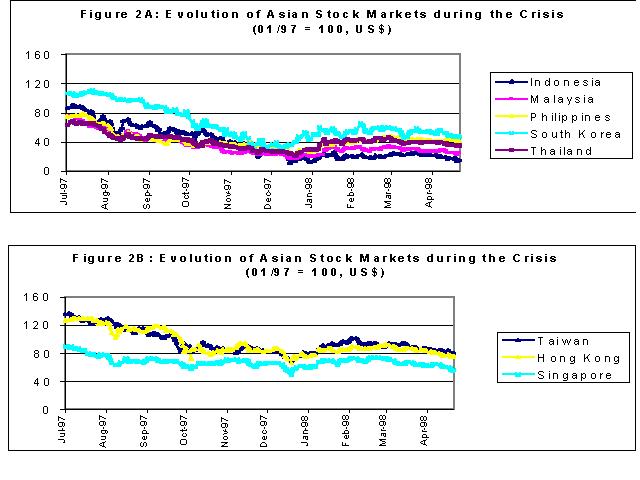

The parent company can either wholly or partially own the subsidiary company. When a parent company acquires a subsidiary by buying up that company’s stock, the acquisition is a qualified stock purchase for tax purposes. Moreover, any losses by the subsidiary can be used to offset the profits of the parent company, resulting in a lower tax liability.
Acquisitions may be costly to execute and there may be inherent risks that come with doing business in another country. Within one month of the incorporation of the company, it is required to introduce a minimum paid-up share capital of rupees one lakh. Another type of beneficial entity is a wholly owned subsidiary for those who want to set up a permanent establishment in India. The Wholly-Owned Subsidiary structure enables greater control over the business and its operations while reducing taxes and other liabilities. A Wholly-Owned Subsidiary is one of the most common subsidiary structures worldwide, but one should consider its specific tax advantages before incorporating it. A company is a subsidiary but not a wholly-owned subsidiary if the parent company holds between 51% and 99% of its equity.
The application for registration of Wholly Owned Subsidiary shall be submitted in web-based Form No. SPICe+ along with the fee as provided for under the Companies Rules, 2014. The entry route through which investment by a person resident outside India does not require the prior Reserve Bank approval or Government approval.
A parent company also directs how its wholly-owned subsidiary’s assets are invested. A parent company that acquires a subsidiary overseas or in an industry that’s new to it might take a less heavy-handed approach, leaving current management in place. A parent company has operational and strategic control over its wholly-owned subsidiaries. How it exercises that control has a great deal to do with the success or failure of the partnership. That means a holding company can either be a company incorporated in India or a company incorporated/ registered outside India. It is considered a domestic company under tax law and is entitled, as applicable to all other Indian companies, to all deductions, allowances from the deduction.
Acquiring A New CompanyAcquisition refers to the strategic move of one company buying another company by acquiring major stakes of the firm. Usually, companies acquire an existing business to share its customer base, operations and market presence. The purpose of making a wholly-owned subsidiary is to diversify the company’s business operations and create a separate channel meaning of wholly owned subsidiary to run it. A conglomerate is a company that owns a controlling stake in smaller companies—independent operators in similar, but sometimes unrelated, industries. General Re is a global reinsurance company whose North American history dates back to the early 1920s. The company became a direct reinsurer in 1929, offering its services directly and only to insurance companies.
Her expertise covers a wide range of accounting, corporate finance, taxes, lending, and personal finance areas. The ROC will then scrutinize the above mentioned documents and if necessary, directs the authorized person to make necessary corrections therein. The ROC after being satisfied that all the documents are complete’ issues the certificate of the incorporation of the company, which is the conclusive proof of registration of the company in India. In case the property is not taken on lease by the companies himself, a no objection certificate would be required. In this context, through this article we will look at the process and procedure for a NRIs, Foreign National and Foreign Companies in order to incorporate, manage and grow a business in India.
A wholly owned subsidiary refers to a business entity whose entire stock is owned by another enterprise, referred to as the parent company. The parent company usually gives the subsidiary the mandate to operate; although, it still retains legal control by virtue of being an independent legal entity. Some of the advantages of wholly owned subsidiaries include timely strategic decision making, retained operational control, easier financial reporting, increased financial resources, and diversification. However, wholly owned subsidiaries also have several disadvantages, such as potential financial losses, cultural and political challenges, lack of operational flexibility, and the possibility of a conflict of interest. A subsidiary is a business entity that is partially owned by another firm, with the parent company owning percent of its stocks as a majority shareholder.

Another prime example of a wholly-owned subsidiary is KFC, which is a wholly owned subsidiary of PepsiCo Inc. 2) Acquiring an existing business in a foreign country and utilising that firm to manufacture and/or market its products in the host country. Under terms of the merger agreement, Learning Co. will become a wholly owned subsidiary of Broderbund. Now he can present a person say Mr. B, on his behalf whose name shall be presented on register of members but indirectly he will be the owner and will be controlling company.
AccountingTools
In the instant case there is change in the beneficial interest of the shares held by Mr. A, therefore, declaration as prescribed u/s 89 shall be given by Mr. X and M/s BBC Ltd, a and thereafter by ABC Ltd. In case a transfer has not been registered in the books of a company, then the transferor shall be entitled to receive dividend if he is a registered holder as on the record date. CAs, experts and businesses can get GST ready with ClearTax GST software & certification course. Our GST Software helps CAs, tax experts & business to manage returns & invoices in an easy manner. Our Goods & Services Tax course includes tutorial videos, guides and expert assistance to help you in mastering Goods and Services Tax.
- Both Generally Accepted Accounting Principles and the International Financial Reporting Standards require companies to report the financial data of their subsidiaries if the parent company is public.
- Wholly-Owned Consolidated Subsidiary means any Consolidated Subsidiary all of the shares of capital stock or other ownership interests of which (except directors’ qualifying shares) are at the time directly or indirectly owned by the Borrower.
- Berkshire Hathaway is a holding company whose business is acquiring shares of other companies.
- In order to incorporate Indian Subsidiary Company, similar process is followed as in case of Private/Public Company in India.
The parent business often holds more than 50% of the subsidiary’s voting shares . For liability, tax, and regulatory reasons, the parent and subsidiary corporations maintain their separate legal statuses in spite of their ownership stake. Balance SheetsA balance sheet is one of the financial statements of a company that presents the shareholders’ equity, liabilities, and assets of the company at a specific point in time. It is based on the accounting equation that states that the sum of the total liabilities and the owner’s capital equals the total assets of the company. Controlled CompanyThe controlled company refers to the business entity whose 50% or more voting stocks are held by other organizations. Such a corporation is not required to adhere to public company rules, and the major stakeholders have the right to select the company’s directors.
If a private company is acquired by a public corporation, the change in management style can lead to a period of rough transition. Subsidiary management is often carried out by bringing in replacements from within the employees of the parent company. An exception is when the subsidiary management has knowledge or experience which is not readily available to the parent company. A parent company is simply a company that runs a business and that owns another business — the subsidiary.
The term mergers and acquisitions (M&A) refers to the consolidation of companies or their major assets through financial transactions between companies. But these changes must be made while avoiding disruption at the subsidiary as much as possible. Running a subsidiary can be difficult if the acquired company has a different management culture.
How to Register a Company in India…
The company remained public until 1996 when Buffett purchased all of GEICO’s outstanding stock. At this point, GEICO became a wholly-owned subsidiary of Berkshire Hathaway. Parent companies generally use subsidiaries to get into a specific market. They can do this by setting up a new company or by acquiring a company that’s already established in the target market.

E.g., A specific project might be allowed at the parent firm, but it might not be allowed in the subsidiary company due to local legal restrictions. If the wholly owned subsidiary is required to absorb any losses, the parent company will suffer direct consequences from those losses, so the parent company must step in to aid the subsidiary’s recovery. A wholly owned subsidiary may continue to have its own management team, clientele, and corporate culture although being controlled by another organization. Employees of a firm that is acquired could be concerned about layoffs or reorganization. Thus, maintaining a cost synergy between the parent and subsidiary company.
How to Set Up a Wholly Owned Subsidiary?
This information can be found in the parent company’s consolidated financial statement. A wholly owned subsidiary is a company whose common stock is 100% owned by another company. A company may become a wholly-owned subsidiary through an acquisition. Companies can derive various advantages of the structure of a wholly-owned subsidiary. In countries where the licensing environment makes it difficult to create a new company, the parent company can take control of an existing company which has the authority to conduct business there. Acquiring a subsidiary that already holds a permit simplifies the ability to conduct business without delays.
A parent company may acquire a firm and turn it into a wholly owned subsidiary. A business whose common stock is 51% to 99% held by a parent firm is referred to as a majority-owned subsidiary. A subsidiary company is considered as a wholly owned subsidiary company when it’s all common stock is owned by another company. Wholly Owned Subsidiary Company is an independent legal corporation having its own framework and administration however; its day to day business is directed by the parent company.
Mutual fund Investments
Companies that must rely upon suppliers and service providers can take control of their supply chain by use of wholly owned subsidiaries. This is a means of vertical integration where companies in a supply chain are under the control of a common owner. For example, a car manufacturing company may have several wholly owned subsidiaries, including a tire company and several different auto parts companies. A wholly owned subsidiary is a business entity whose entire stock is owned or held by another company, referred to as the parent company.
Subsidiary vs. Wholly-Owned Subsidiary
It is a very important benefit to a parent company who can exercise operational or strategic control over its subsidiary company. These types of companies can be incorporated as a private limited company in India. They are treated as Indian companies under theIncome Tax Act, and they are also eligible for the deduction and exemption benefits like other Indian Companies. A company who choose to operate in more than one country can operate its business through a wholly owned subsidiary. Board Resolutionsby the parent company indicating its intention to incorporate subsidiary in India and authorizing a director to issue specific power of attorney. In case of WOS of foreign company, foreign company wants to use same prefix as per their foreign company of incorporation of Indian company, NOC form the foreign company on their letter head required to use prefix.
